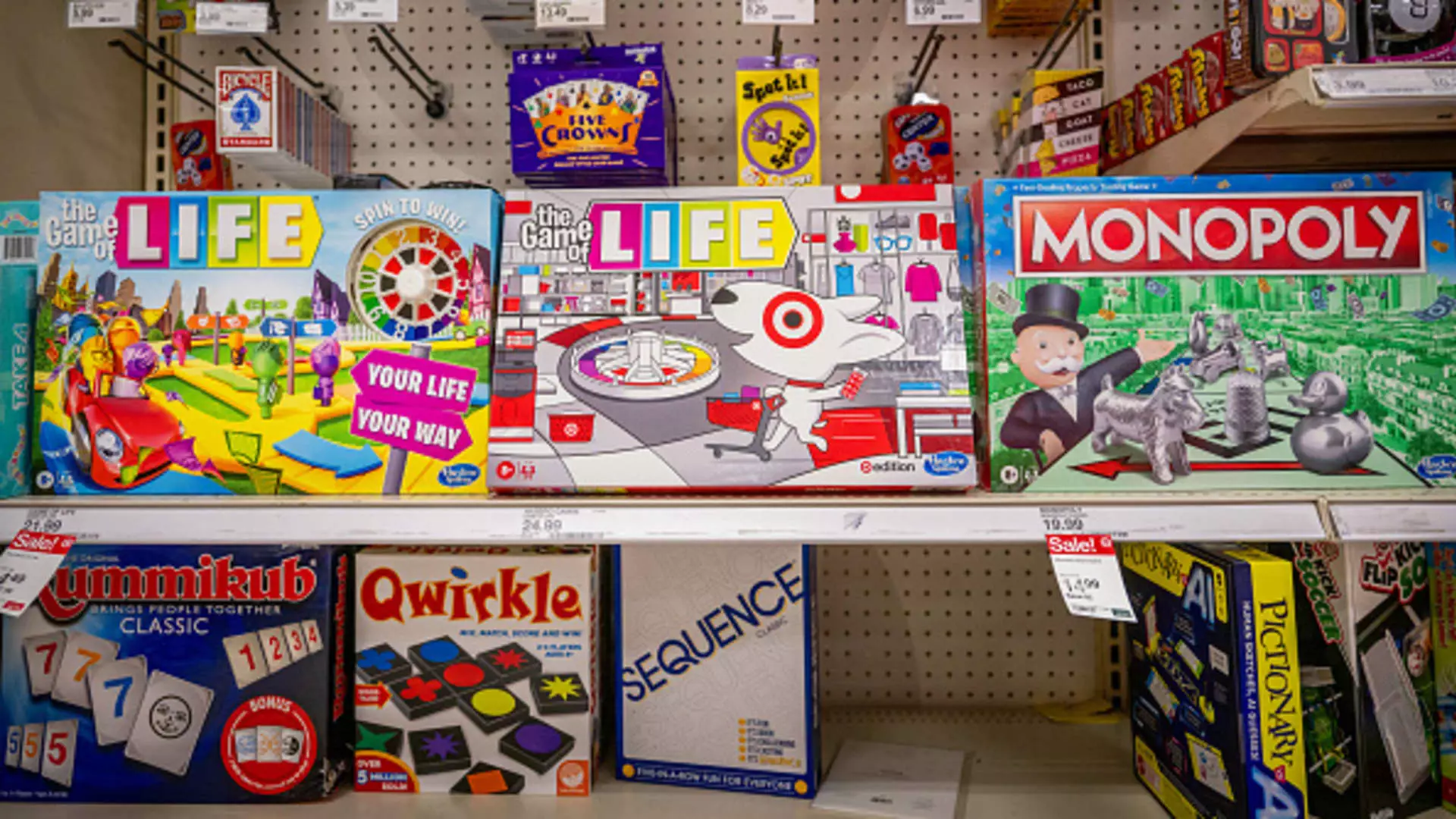In an era where political decisions resonate deeply within the economic landscape, companies like Hasbro find themselves grappling with the fallout of trade wars, particularly under the strident policies advocated by former President Donald Trump. The threat of a staggering 145% tariff on imports from China looms large for Hasbro, a titan of the toy industry, threatening to carve as much as $300 million from its profits. While the company’s earnings announcement initially sparked optimism, the reality of an ongoing trade conflict overshadows any positive news. This precarious situation serves as a stark reminder of how entangled domestic industries are with international diplomatic relations.
The Reality of Tariff-Driven Uncertainty
The implications of tariff-induced uncertainty are profound for any enterprise, particularly one as iconic as Hasbro. Chief Financial Officer Gina Goetter pointedly noted that the company is preparing for a range of tariff scenarios, emphasizing that the current geopolitical landscape is anything but stable. With projections hinting at a potential $300 million impact by 2025, it becomes clear that Hasbro’s strategy must pivot away from traditional practices to navigate this new sense of unpredictability. The expectations of rising consumer prices cast a long shadow over the company’s operations, and the specter of job losses only deepens the angst surrounding this situation.
The atmosphere at Hasbro, however, reveals a duality of resilience and vulnerability. CEO Chris Cocks’ confidence in the company’s positioning amidst these trials is notable, as he lauds the strengths of Hasbro’s gaming and licensing segments. Yet, the dichotomy of relying heavily on imported goods from China highlights how closely tied the company remains to a singular, politically volatile supply chain. With aspirations to transition some manufacturing to countries like Turkey, Hasbro is attempting to diversify its operations, yet this flexibility comes at a cost—higher production expenses that could ultimately burden consumers even further.
The Supply Chain Conundrum: Opportunities and Obstacles
Cocks’ acknowledgment of the challenges presented by shifting the entire supply chain away from China is crucial. The essence of manufacturing extends beyond simple cost metrics; it involves relationships, skills, and infrastructural readiness that countries like China have cultivated over decades. The notion of shifting production for beloved products such as Play-Doh to Turkey may seem practical on the surface. However, the logistical intricacies—rerouting shipments and managing lead time—propound a more complex picture fraught with risks.
Moreover, certain goods encapsulate a multitude of components that are not so easily replicated elsewhere. Electronics, complex high-end decoration, and foam components are logistical nightmares when exploring alternatives to established manufacturing lines in China. Consequently, there lies a balance to strike: the imperative to mitigate the immediate effects of tariffs versus the long-term necessity to maintain product quality and consumer trust.
A Cost-Saving Mission: Navigating Tariff Pressures
Hasbro’s pursuit of a $1 billion cost savings plan is a testament to the urgency of the situation. Yet, Cocks’ admission that price hikes are inevitable magnifies the difficult choices ahead. The company’s intention to raise prices discreetly underscores a desire to protect its loyal fanbase, even as it aims to shield its shareholders from the brunt of the economic fallout. This calculated decision, however, invites scrutiny; how far can a company push consumer tolerance before it risks alienating its core audience?
The unfolding scenario is not merely about finances; it is indicative of broader societal dynamics at play. Consumer trust hinges on more than just the price tag; it is tied to brand integrity and a sense of shared community. Should rising prices lead to a perception of exploitation, it could sow discontent among families that have cherished Hasbro’s offerings for generations.
Jakob Madsen, CEO of a lesser-known toy firm, states it succinctly: “The balance between making a profit and maintaining your values is a tightrope walk.” As Hasbro braces for the tumultuous trade winds ahead, the question remains: will it emerge as a transformative leader in navigating these challenges or become yet another victim of shortsighted political maneuvering? The landscape remains uncertain, but the resolve to adapt will define the company’s legacy in the years to come.


Leave a Reply